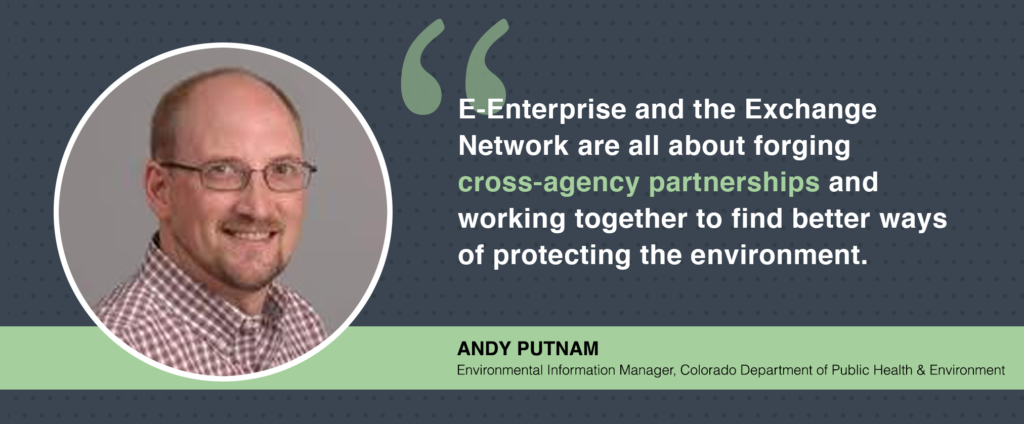
What roles do you fill on behalf of the E-Enterprise initiative?
My many years of involvement with the governance of E-Enterprise and the Exchange Network have been very rewarding. As a member of the E-Enterprise Leadership Council and as state chair of the Management Board, among other leadership roles, I help steer the day-to-day activities of E-Enterprise.
What has been the most rewarding aspect of your involvement in E-Enterprise?
The most valuable aspect of E-Enterprise is the people, coupled with their shared knowledge. E-Enterprise and the Exchange Network are all about forging cross-agency partnerships to find better ways to protect the environment through collaborative leadership. That is not possible without building solid relationships (and friendships) with colleagues from all across the country in federal programs and state, tribal, and local government agencies. Whether working on a multi-agency project team or on a governance group, E-Enterprise partners are always willing to share their perspectives, solutions, and experiences. I can in turn apply those lessons and innovative ideas in my agency. It’s extremely comforting to know that I have colleagues in other organizations dealing with challenges similar to those that I face on a daily basis.
In which specific E-Enterprise projects are you currently involved, and how will that work improve environmental outcomes?
I’m currently helping to lead an initiative central to E-Enterprise, the development of a Digital Strategy (accompanied by a technology architecture) that encompasses the shared vision among E-Enterprise partners to better streamline processes, increase collaboration, and reimagine ways to use technology to achieve better environmental outcomes and services for both the public and the regulated community.
Building on last year’s first publication of the Digital Strategy, which defined a shared set of principles to help environmental agencies better coordinate their IT investments, we are now developing specific guidance and detailed recommendations for implementing the strategy.
In addition, with regard to the Digital Strategy’s technical architecture, E-Enterprise recently drafted a proposed framework for managing application programming interfaces or APIs (the foundational technology for exchanging data and allowing agencies to plug into reusable tools and services). We’re also using the principles embedded in the Digital Strategy to guide upcoming work on major program and system modernizations for drinking water and clean water.
At the Colorado Department of Public Health & Environment (CDPHE), we’ve applied Digital Strategy principles to the development of our agency’s Digital Transformation Plan, a blueprint guiding the way we modernize our fleet of applications. We’re also working on an Exchange Network-funded project with New Mexico, Arizona, and EPA to find more modern and secure ways to share information across state boundaries.
What else is the CDPHE doing to modernize its own processes?
For several years, CDPHE has been working to move various processes and services online through our Colorado Environmental Online Services (CEOS) portal. Today, we manage all our State Revolving Fund loan projects through CEOS, enabling us to work more efficiently with our customers and other state agencies. We’ve also moved our stormwater permitting into CEOS; as a result, we have decreased the time it takes to award a permit from eleven days to just one. CDPHE has also produced a number of publicly available interactive dashboards, such as the Local Environmental Health Reporting Tool, to present and explain the various datasets we maintain.
Lastly, CDPHE is a long-time participant in the Environmental Public Health Tracking initiative with the Centers for Disease Control, and we regularly contribute to the ECOS Results project.
What lessons have you learned through your experience with E-Enterprise?
Every partner brings unique perspectives and skills to E-Enterprise conversations and projects. It’s important to embrace the differences among us, learn from each other, and play to our individual strengths for the benefit of all. Time after time, I’ve seen that states and tribes are particularly excellent incubators of innovation. E-Enterprise and the Exchange Network help provide resources to nurture and spread those innovations. That kind of collaboration can be challenging, and it doesn’t always move at the pace we would like, but the end product is almost always well worth the extra time and energy.
